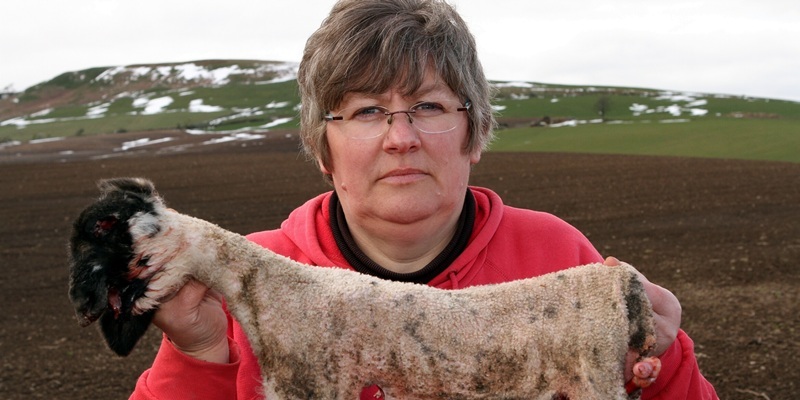A post mortem carried out on a dead lamb found at a Perthshire farm has cast doubts on it being killed by a sea eagle.
It had been thought that a sea eagle had killed the newborn lamb. Rhona Duncan found the bird devouring the carcass in the lambing field she runs with her husband, Kenny, at Cockerstone, Little Glenshee, near Bankfoot, on April 3.
Mrs Duncan had said one of the lamb’s legs had been ripped off, and expressed her concerns at the sea eagle possibly attacking a child or small dog.
She had said she was in favour of conserving the bird species but questioned reintroducing sea eagles.
The RSPB Scotland runs a joint project with Scottish Natural Heritage (SNH) called the East of Scotland Sea Eagles and has released at least 16 of the young birds into the wild.
The birds have been blamed for attacking sheep and one sea eagle also attacked Perthshire clergyman the Very Rev Hunter Farquharson, of Abernethy, in August last year.
One of the birds, which can grow to have a nine foot wingspan, jumped on Mr Farquharson’s back, leaving cuts to his head and hands and a four-inch wound which required stitches at Perth Royal Infirmary.
It also killed one of his prize-winning Toulouse geese.
Bruce Anderson, RSPB Tayside and Fife area manager, said the post-mortem on the lamb was carried out by the Scottish Agricultural College’s veterinary services on their behalf.
He said it shows the claim that the lamb died as a result of a ”savage attack” to be highly unlikely.
He said it was more likely it had died from hypothermia and subsequent opportunistic predation.
”Whilst we of course sympathise with Mrs Duncan, and appreciate that the loss of any of her livestock is distressing, we feel that some of the assumptions made should be looked at in light of the evidence from the post mortem of the lamb that died,” he said.
”The final diagnosis of the lab report states: ‘Although predation was extensive there was no evidence that the lamb had died due to traumatic injuries such as might have been inflicted by a large predatory bird.
”’Given the climatic conditions on April 3, (heavy snow), death due to hypothermia and subsequent opportunistic predation seem the most likely explanation in this case.'”
Mr Anderson added: ”This conclusion is entirely consistent with the results of two extensive recent scientific studies conducted by SNH, one carried out on Mull and another in Wester Ross, which showed the impacts of sea eagles on lambs to be minimal, with the birds largely scavenging stillborn, or non-viable, lambs after death.
”The sudden bad weather also caused considerable lamb mortality in places as far afield as northern England, where no eagles occur.”
He stressed that RSPB Scotland needs to liaise with associated people to help all species of birds.
”Scotland’s sea eagles and waders, and its rich biodiversity in general, are major assets to the landscape, economy and well-being of the country,” he added.
”Where conflicts exist, as they inevitably will, they need to be resolved by reasoned discussion based on the evidence as far as they are known.
”RSPB Scotland is certain that we need to strengthen our collaborative working with land managers and farmers for the benefit of all species, so that we have a rich natural legacy to hand over to our children.”
